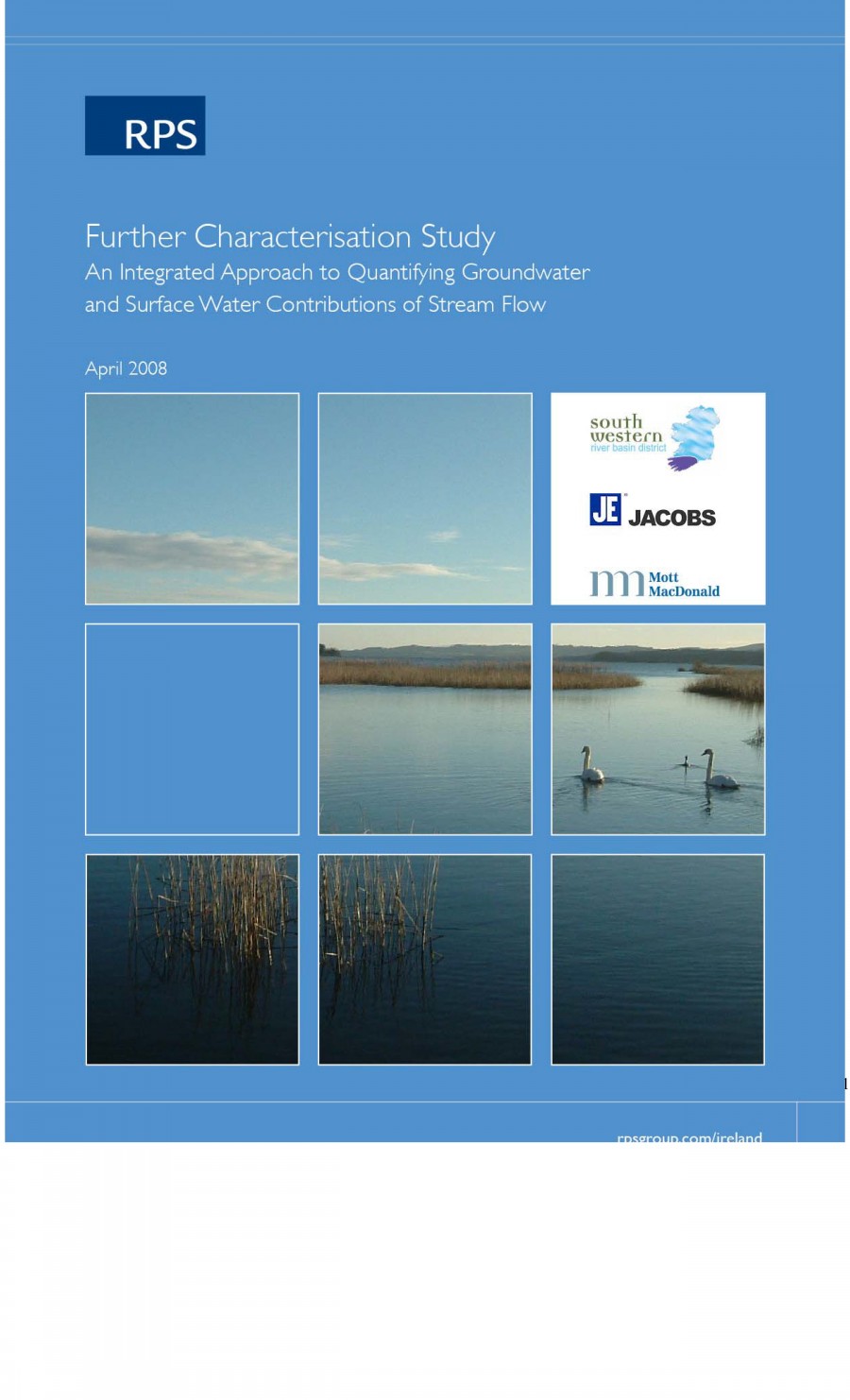Surface Water Groundwater Interaction (2008)

| Version | |
| Download | 39 |
| Stock | ∞ |
| Total Files | 9 |
| Size | 21.17 MB |
| Create Date | 29th August 2008 |
| Last Updated | |
The management of water resources in Ireland prior to the Water Framework Directive (WFD) has focussed on surface water and groundwater as separate entities. A critical
element to the successful implementation of the WFD is to improve our understanding of the interaction between the two and flow mechanisms by which groundwaters discharge to surface waters. An improved understanding of the contribution of groundwater to surface water is required for the classification of groundwater body status and the
determination of groundwater quality thresholds.
The overall aim of this study is to estimate the contribution of groundwater to surface waters, particularly river flows. The results will be used to assist in determining the
groundwater quality thresholds for chemical parameters that are linked to surface water body EQS requirements. The annual average groundwater flow component will be used
in this case.
The results also have a wider application to/in many areas of the WFD. In particular, it will assist in:
- the prediction of the impact on rivers and lakes from groundwater abstraction;
- further characterisation of catchment hydrology: results from this study will contribute to studies estimating low flow conditions in ungauged catchments;
- an improved understanding of groundwater flow in poorly productive bedrock aquifers.
This is a difficult study to undertake in an Irish context because the physical settings can be very complex. In many surface water catchments, the groundwater flow regime is
heterogeneous, and the aquifers underlying the catchment often comprise a mixture of types. Further, the rainfall is highly variable across the country: the west typically has
higher rainfall amounts and more frequent rainfall events than the east of Ireland. Some catchments in the west may have previously experienced few drought conditions, so it
can be difficult to identify the component of groundwater flow from the bedrock aquifer in a surface water hydrograph.
| File | Action |
|---|---|
| SWGW Interaction POMS - Sections 4 and 5.pdf | Download |
| SWGW Interaction POMS - Section 3.pdf | Download |
| SWGW Interaction POMS - Section 2.pdf | Download |
| SWGW Interaction POMS - Section 1.pdf | Download |
| SWGW Interaction POMS - Appendix 7B.pdf | Download |
| SWGW Interaction POMS - Appendix 7A.pdf | Download |
| SWGW Interaction POMS - Appendices 8 and 9.pdf | Download |
| SWGW Interaction POMS - Appendices 4 to 6.pdf | Download |
| SWGW Interaction POMS - Appendices 1 to 3.pdf | Download |
Download





